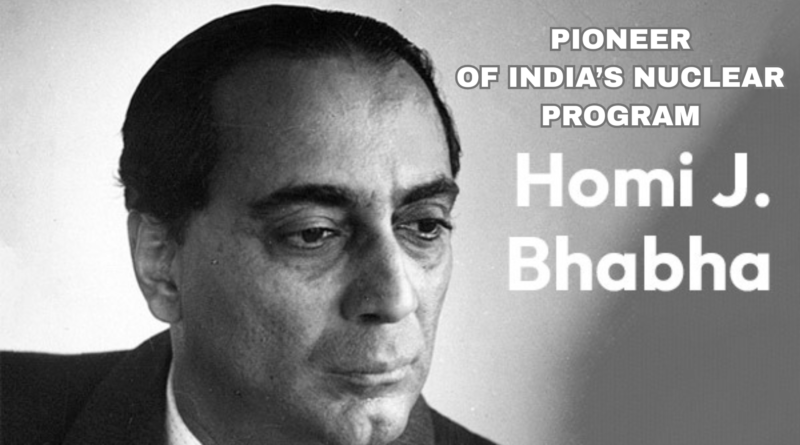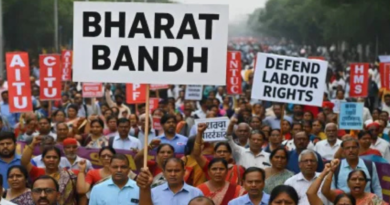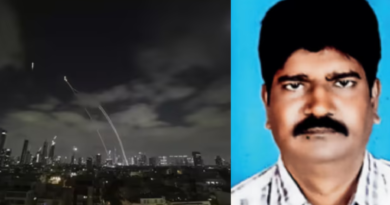PIONEER OF INDIA’S NUCLEAR PROGRAM
Homi Jehangir Bhabha was a visionary Indian nuclear physicist who is widely regarded as the father of the Indian nuclear program. He played a pivotal role in laying the scientific and technological foundation for India’s atomic energy capabilities. His contributions to nuclear physics and institution-building have left a lasting legacy in the country’s development.
EARLY LIFE AND EDUCATION
Born on October 30, 1909, in Bombay (now Mumbai), Homi Bhabha came from a wealthy and well-educated Parsi family. His early academic brilliance earned him a place at Cambridge University, where he initially studied mechanical engineering. However, his passion for theoretical physics led him to switch fields and eventually earn a doctorate in nuclear physics.
SCIENTIFIC CONTRIBUTIONS ABROAD
During his time in Europe, Bhabha collaborated with prominent scientists such as Niels Bohr and Enrico Fermi. He made significant contributions to quantum theory and cosmic ray research. His work on electron-positron scattering is now known as “Bhabha Scattering” – a term still taught in modern physics courses.
RETURN TO INDIA WITH A VISION
As World War II erupted, Bhabha returned to India in 1939. He soon realized the need for advanced scientific research institutions in the country. With support from the Tata Trust and the Indian government, he founded the Tata Institute of Fundamental Research (TIFR) in 1945 in Bombay, which became a hub for advanced physics and mathematics.
THE BEGINNING OF INDIA’S ATOMIC JOURNEY
Recognizing the potential of atomic energy, Bhabha convinced Prime Minister Jawaharlal Nehru of its importance for India’s future. In 1948, he was appointed the first chairman of the newly formed Atomic Energy Commission of India. Under his leadership, India’s nuclear energy program began to take shape.
ESTABLISHMENT OF BARC
In 1954, Homi Bhabha founded the Bhabha Atomic Research Centre (BARC) in Trombay, near Mumbai. BARC was the centerpiece of India’s nuclear development efforts, focusing on research in reactors, fuel cycles, and atomic energy applications. It remains one of India’s most prominent scientific institutions.
INTERNATIONAL DIPLOMAT AND PEACE ADVOCATE
While Bhabha was instrumental in developing nuclear technology, he also advocated for its peaceful use. He represented India in numerous international forums, including the United Nations. He was a key figure in proposing safeguards for nuclear energy usage and opposed nuclear weapons proliferation globally.
MULTIDISCIPLINARY GENIUS
Homi Bhabha wasn’t just a physicist-he was a true Renaissance man. He was deeply interested in art, music, and architecture. He designed parts of TIFR himself and actively promoted the integration of science with culture. His belief in holistic development shaped the character of Indian scientific institutions.
TRAGIC AND MYSTERIOUS DEATH
On January 24, 1966, Homi Bhabha tragically died in an air crash near Mont Blanc, France, while en route to a conference in Vienna. His sudden death shocked the nation and sparked conspiracy theories, especially given his role in nuclear development. Despite investigations, the exact cause remains unclear to this day.
LEGACY THAT SHAPED INDIA
Homi Bhabha’s legacy continues to inspire generations of Indian scientists and technologists. His vision helped India become a nuclear-capable nation and laid the groundwork for advancements in energy, medicine, and space technology. Institutions he helped build continue to thrive and lead scientific innovation.
REMEMBERING A NATIONAL ICON
In recognition of his monumental contributions, Homi Bhabha has been honored in numerous ways. Educational and research institutions bear his name, and his birthday is celebrated in scientific communities. His life exemplifies the power of vision, intellect, and national service – making him one of modern India’s greatest minds.




